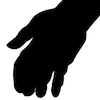 BIRD
BIRD
Once upon a midnight dreary, while I pondered, weak and weary, Over many a quaint and curious volume of forgotten lore— While I nodded, nearly napping, suddenly there came a tapping, As of some one gently rapping, rapping at my chamber door . . . Quoth the Raven "Nevermore." (Edgar Allen Poe, "The Raven")
One shudders in delight at the tone of Poe’s macabre poem, which carries on the literary tradition of war, death, and mystical power as symbolized by the genus corvus (including ravens, rooks, jackdaws, crows . . .). Aesop, Shakespeare, Dickens, and others went on about this ubiquitous black fowl. Of course, corvids form only a sliver of the world’s bird population, and stories throughout humanity abound with references to them:
- In ancient Greece, the crane was sacred to Hermes and Hestia, the eagle to Zeus.
- The pelican, legend says, pierced its breast bloody to feed its young in a show of piety.
- The Victorian culture picked up the Greek Aphrodite’s and Jewish King Solomon’s association of love with the swooping swallow to popularize jewellery that spoke of romantic faithfulness.
- No one could forget Rowlings’s owl Hagrid (Harry Potter), and Narnian skies flutter with many winged creatures including the hummingbird, albatross, and flamingo.
- The Beatles (“Blackbird Singing in the Dead of Night”) also employed the trope of the bird to say something or other philosophical.
Scriptural writers, too, mentioned a great variety of birds–some quite exotic, such as storks (Jer. 8:7) and ostriches and peacocks (Job 39:13). Our feathered friends appear in many Bible stories; for example:
- God fashioned the birds of the air on the fifth day of Creation (Gen. 1:21)–some considered unfit to eat or offer as sacrifice such as the heron, hawk, stork, cormorant (Lev. 11:13-19).
- “Clean” bird flesh was edible and offered by the poor in Temple sacrifice to the Lord (Gen. 15:9; Lev. 12:8).
- Elijah was fed bread and meat brought to him on God’s command by an “unclean” flock (1 Kings 17:5-6). The Lord is greater than religion, His grace superseding law.
- God used bird imagery to describe His people’s flight from and return to His presence, physically and spiritually (Exod. 19:4; Deut. 32:11-12; Hos. 11:11; Ps. 55:6-8, 124:7). We cannot escape Him (Ps. 139:9-10).
- Noah took birds (both unclean and clean) into the Ark, using the raven and the dove to determine when the waters had receded sufficiently for disembarkment (Gen. 8:6-8).
- Jonah, whose name in Hebrew means dove or pigeon, fled his God-ordained task as prophet (Jon. 1:3).
- Eagles symbolized punishing war (Deut. 28:49; Hab. 1:8).
- Goliath cursed David, threatening to feed his flesh to carrion birds (1 Sam. 17:44); similarly, vultures picked the bones of corpses (Matt. 24:28).
- God, like a bird Himself, offers us protection and healing (Isa. 31:5, 40:31; Ps. 17:8, 91:4; Ruth 2:12; Mal. 4:2).
- But the Lord also uses birds to inflict holy judgment upon evil people as a general principle (Prov. 30:17) and at the end of the Great Tribulation (Rev. 19:17-18).
- The Holy Spirit descended upon Jesus like a dove as a symbol of God’s presence (Luke 3:22; John 1:32), perhaps an echo of His birdlike hovering over the waters of creation (Gen. 1:2).
- Jesus compared the value of birds to humans in showing the providential care of the Father for the birds themselves, and for humans through the birds (Matt. 6:26; Luke 12:7).
- In preaching and parable, Jesus used bird imagery to teach His followers about the nature of the Kingdom (Matt. 13: 4, 19; Mark 4:30-32).
It’s amazing how God uses humble, physical items to allude to exalted, spiritual realities.
NOTE: In these short articles tying literature and culture to the Bible, I explore what God might have been saying in His pattern of usage for each symbol. English rendition of the original Hebrew, Aramaic, or Greek varies with translations (e.g., “scroll” is sometimes interchangeable with “book”); however, the quality and underlying meaning of the selected emblem remain consistent across Bible versions. I’ve used two excellent resources for much of my research: A Dictionary of Biblical Tradition in English Literature (David Lyle Jeffrey) and Dictionary of Biblical Imagery (Leland Ryken, James C. Wilhoit, Tremper Longman III).













Leave a Reply